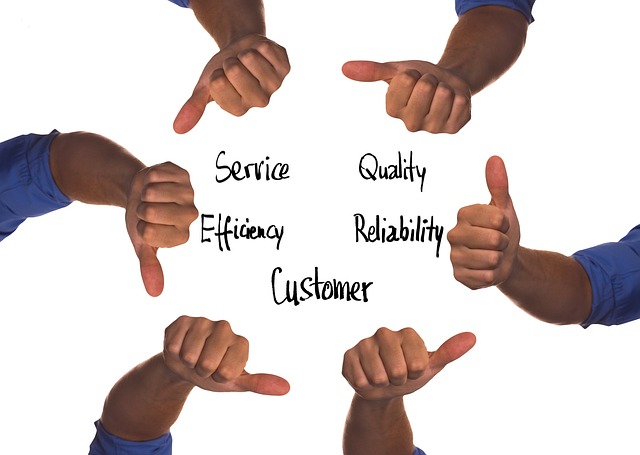Ecommerce business automation streamlines operations by identifying and automating repetitive tasks, enhancing customer engagement and satisfaction. Selecting suitable tools based on unique needs, integrations, scalability, and cost-effectiveness is crucial. Mapping ideal customer journeys, utilizing integration platforms for automated processes like order fulfillment and marketing campaigns saves time and reduces errors. Regularly review and optimize workflows, monitor key metrics to refine automation, adjust based on data-driven decisions for maximum sales and seamless shopping experiences.
Implementing ecommerce business automation can streamline operations, boost efficiency, and enhance customer experiences. This comprehensive guide explores effective strategies for optimizing your online store. Discover how to identify key areas ripe for automation, select the right tools tailored to your needs, integrate automated workflows seamlessly, and continuously monitor, optimize, and scale your automation efforts for sustained growth. Unleash the power of ecommerce business automation today!
- Identify Key Areas for Automation
- Choose the Right Ecommerce Automation Tools
- Integrate and Set Up Automated Workflows
- Monitor, Optimize, and Scale Your Automation
Identify Key Areas for Automation

Identifying key areas for ecommerce business automation is a strategic step toward enhancing operational efficiency and boosting sales. Start by evaluating your current processes to pinpoint bottlenecks and repetitive tasks that can be streamlined. For instance, automating customer onboarding, order processing, and inventory management can save significant time and resources. Implementing automated systems for social media marketing and reputation management ensures consistent engagement with customers while promptly addressing any concerns or reviews.
Moreover, focusing on landing page optimization through automation allows you to quickly create personalized experiences tailored to different customer segments. By automating these areas, your business can maintain a competitive edge, improve customer satisfaction, and drive conversions. This strategic approach not only simplifies day-to-day operations but also sets the foundation for continuous growth in the dynamic ecommerce landscape.
Choose the Right Ecommerce Automation Tools

Selecting the appropriate ecommerce automation tools is a strategic move that can significantly impact your business’s success. With numerous options available in the market, understanding your unique requirements is key. Different tools cater to various aspects of ecommerce operations, from inventory management and order processing to marketing and customer relationship management (CRM). For instance, automated inventory systems ensure stock levels are maintained accurately, while marketing automation tools can streamline email campaigns and personalized promotions, fostering customer engagement.
When choosing, consider integrations with your existing platform, scalability for future growth, and cost-effectiveness. Look for solutions that offer a comprehensive suite of features rather than just automating one task. A well-chosen automation system can save time, reduce human error, and enhance overall efficiency, allowing you to focus on strategic decision-making while your business runs smoothly.
Integrate and Set Up Automated Workflows

To implement ecommerce business automation effectively, integrating automated workflows is a crucial step. Start by mapping out your ideal customer journey and identifying manual tasks that can be streamlined. Utilize tools like Zapier or Integromat to connect various software applications used in your ecommerce operations, such as shopping cart platforms, inventory management systems, and customer relationship management (CRM) tools. This seamless integration allows for automated processes like order fulfillment, stock updates, and even personalized marketing campaigns based on customer behavior.
By setting up these automated workflows, you can save time, reduce human error, and enhance the overall customer experience. For instance, automatically send confirmation messages to customers via email or WhatsApp marketing after they place an order. Leverage marketing analytics to track campaign performance and gather insights that inform future strategies. Regularly review and optimize your automated processes to ensure they remain efficient and aligned with your business goals.
Monitor, Optimize, and Scale Your Automation

As your ecommerce business automation processes mature, it’s crucial to continuously monitor their performance. Keep a close eye on key metrics like order fulfillment speed, customer satisfaction ratings, and conversion rates to identify areas for improvement. Regularly reviewing these insights allows you to refine your automated workflows, ensuring they remain efficient and aligned with your evolving business needs.
Optimizing your ecommerce automation involves making data-driven decisions. Adjust your sales funnel triggers, refine marketing automation sequences, and tweak inventory management rules based on customer behavior patterns. By continuously refining your ecommerce solution, you can maximize its potential, drive higher sales, and deliver a seamless shopping experience for your customers.
Implementing ecommerce business automation is a strategic move that can streamline operations, enhance efficiency, and significantly boost revenue. By focusing on key areas like order management, customer service, marketing campaigns, and inventory control, businesses can leverage the right tools to create automated workflows tailored to their unique needs. Continuous monitoring, optimization, and scaling of these processes ensure the system remains effective as the business grows. With the right approach, ecommerce automation becomes a powerful asset, enabling entrepreneurs to compete effectively in today’s digital marketplace.
